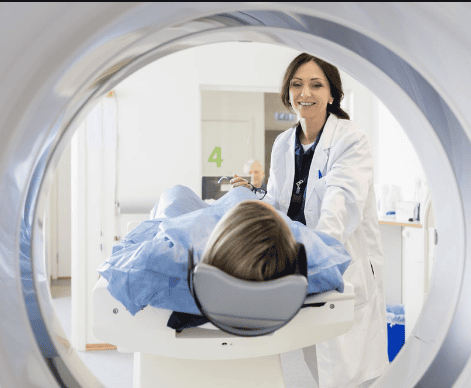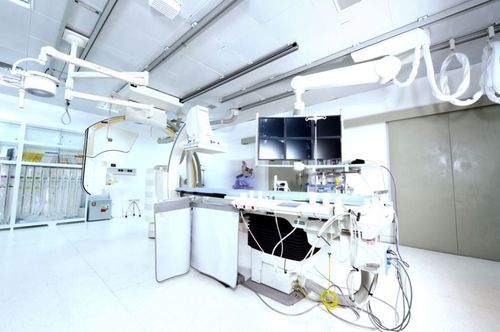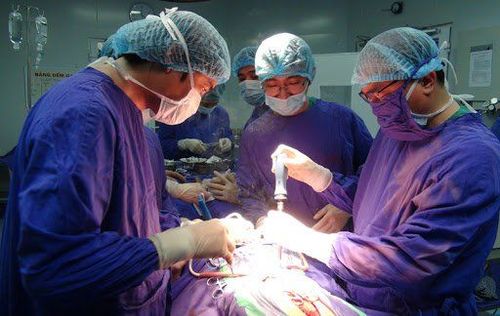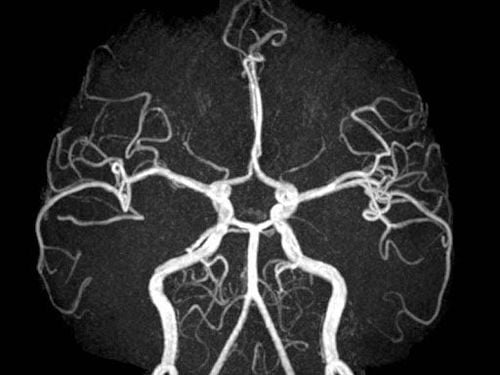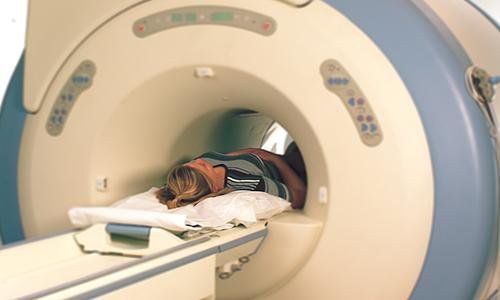This is an automatically translated article.
The article is expertly consulted by Master, Resident, Specialist I Trinh Le Hong Minh - Radiologist - Radiology Department - Vinmec Central Park International General Hospital.Magnetic resonance angiography is an imaging technique to investigate whether the blood vessels supplying the organs in the body have narrowing or occlusion, thereby making timely diagnosis and treatment. for related diseases.
1. Magnetic resonance angiography
Magnetic resonance angiography, also known as MRI angiography, is a method that uses magnetic energy along with radio waves to examine blood vessels in the body that other imaging methods cannot do. As x-ray, ultrasound cannot bring. The results of an MRI angiogram can reveal a patient's reduced blood flow and abnormal vascular wall conditions. Magnetic resonance angiography is usually applied to organs such as the brain, kidneys, or lower extremities.Magnetic resonance angiography is usually indicated in the following cases:
Suspected aneurysm, blood clot or accumulation of fat, calcium from plaque in brain blood vessels Aneurysm or artery dissection aorta Narrowing of blood vessels that nourish organs such as the heart, lungs, kidneys, legs. Before taking an angiogram, the patient should tell the treating doctor if he/she has one of the following conditions:
Allergic to contrast agents used in MRI angiography Pregnant women Ever had implantation surgery grafting metal materials into the body Ever put coronary stents, artificial pacemakers, replace metal heart valves... Ever put materials such as prostheses, prostheses, braces ... Ever done currently has an IUD in place or an IUD inserted. Having claustrophobia, fear of being in small spaces. Suffering from medical conditions such as sickle cell anemia, kidney disease Magnetic resonance angiography is performed in the following order:
If the patient has metal materials installed in the blood vessel. The body in the area to be examined should be removed before performing an angiogram. Take off clothes and accessories. The patient can be sedated to reduce anxiety and stress. Placing the patient supine on the table The head, chest and arms are held in place by ropes to immobilize the patient. The space containing the magnetic field is passed through the patient in the position where the blood vessels need to be examined, possibly the head, arm or leg area, or in some cases, the patient's entire body will be brought into this area of the magnetic field. The patient may need to hold their breath for a short period of time during the scan. Abnormalities that can be seen in an MRI angiogram are:
Full or partial blockage of a blood vessel Image of a blood clot in a blood vessel Accumulation of fat and calcium in the lumen of an aneurysm or vascular damage.
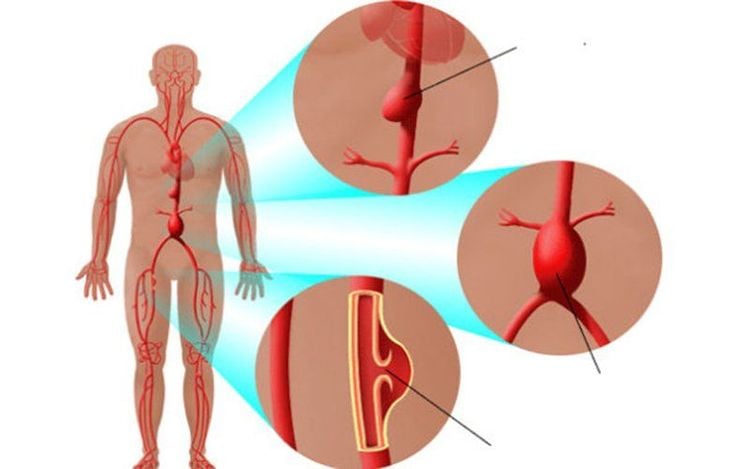
2. Cerebral vascular magnetic resonance imaging
In magnetic resonance angiography, cerebral vascular magnetic resonance imaging is a very important and necessary application to assess the status of blood vessels supplying the brain with blockage or narrowing, thereby assessing Assess the risk of stroke as well as cerebrovascular aneurysm in patients. Before MRI, the patient will be injected with contrast material into the blood vessels of the brain through a needle in the peripheral vein.Clinically, not every patient has signs that think a lot about cerebral artery occlusion to need cerebral vascular magnetic resonance imaging because it can affect the patient's health, so this method Commonly indicated in a number of diseases as follows:
Cerebral artery septum rupture Cerebral artery stenosis Cerebral artery malformation Cerebral vasculitis Brain tumor Cerebral blood vessel thrombosis Tear in the endothelium of the cerebral arteries Some circulation It is important to consider when taking cerebral angiography by magnetic resonance method that patients with underlying diseases such as kidney failure, diabetes, dehydration need to add water and prevent patients before surgery. Perform cerebral angiography using less contrast agent or rehydrate the patient as well as perform some tests to check the patient's kidney function including serum creatinine or blood urea.
Some abnormalities can be observed on the results of magnetic resonance angiography, which are:
Narrowing of the arteries due to accumulation of fat, calcium or blood clots in the brain's blood vessels. Brain tumors cause blood vessels to fail. lying in the correct position according to the anatomical structure Aneurysms of the cerebral blood vessels at a certain location Cerebrovascular malformations possibly due to compression of the brain tumors Contrast spills out of the blood vessels which may suggest a perforation of the blood vessels Brain Cerebral vascular branching abnormally is a pathological condition of birth defects
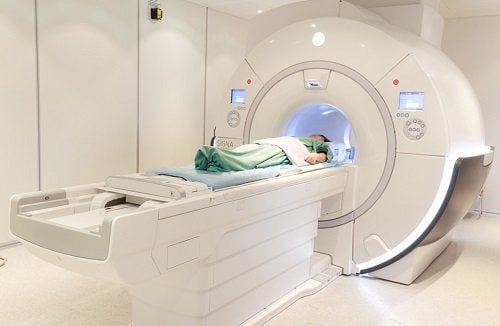
3. Conclusion
Magnetic resonance angiography is an advanced subclinical technique that helps patients early diagnose as well as monitor the treatment of a number of diseases related to blood vessels in the human body, possibly regional blood vessels. head, arms or legs. In particular, cerebral angiography by vascular MRI is a very useful means of timely detection of abnormalities in cerebral blood vessels, contributing to early diagnosis of cerebrovascular accident or aneurysm. brain blood.Vinmec International General Hospital with a system of modern facilities, medical equipment and a team of experts and doctors with many years of experience in neurological examination and treatment, patients can completely peace of mind for examination and treatment at the Hospital.
Before taking a job at Vinmec Central Park International General Hospital, the position of Doctor of Radiology since February 2018, Doctor Trinh Le Hong Minh used to work as a resident in the Radiology Department at Vinmec Central Park. hospitals: Cho Ray, University of Medicine and Pharmacy, Oncology, People's Gia Dinh, Trung Vuong... from 2012-2015. Officially worked at Cho Ray Hospital from 2015-2016, City International Hospital from 2016-2018.
Please dial HOTLINE for more information or register for an appointment HERE. Download MyVinmec app to make appointments faster and to manage your bookings easily.
SEE MOREDoes magnetic resonance imaging (MRI) of the brain have any effect? What cases need magnetic resonance imaging (MRI) of the brain? Diagnosis of cerebrovascular abnormalities in patients with headache by magnetic resonance angiography





